
Lesson calculating density using approximations for volume and area.
- Subject:
- Mathematics
- Material Type:
- Activity/Lab
- Provider:
- Illustrative Mathematics
- Date Added:
- 03/30/2018

Lesson calculating density using approximations for volume and area.

Students are expected to do a combination of both, that is, translating and stretching or shrinking of the graph of the quadratic parent function, f(x) = x^2.

Students recognize and use parent functions for linear, absolute value, quadratic, square root, and cube root functions to perform vertical and horizontal translations. They identify how the graph of y = f(x) relates to the graphs of y = f(x)+k and y = f(x + k) for any specific values of k, positive or negative, and find the constant value, k, given the parent functions and the translated graphs. Students write the function representing the translated graphs.

Students investigate linear equations that form a triangle and determine which vertex is a solution to a system of equations.

This video shows how to construct the centroid of a triangle and properties of the centroid.

This video shows how the centroid is located two-thirds of the way along each median or partitions the median into a ratio of 2:1 with the longest segment nearest the vertex.
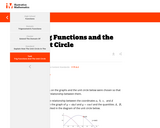
The purpose of this task is to help students make the connection between the graphs of sint and cost and the x and y coordinates of points moving around the unit circle. Students have to match coordinates of points on the graph with coordinates and angles in the diagram of the unit circle.

Sstudents will use a graphing calculator to discover the relationship between the trigonometric functions: sine, cosine, and tangent, and the ratios of the side lengths of a right triangle.

On this website, students learn to find the sine, cosine, and tangent of 45-45-90 triangles and also 30-60-90 triangles.
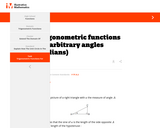
The purpose of this task is to examine trigonometric functions for obtuse angles. The values sinx and cosx are defined for acute angles by referring to a right triangle one of whose acute angles measures x. For an obtuse angle, no such triangle exists and so an alternate definition is required.

The purpose of this task is to apply translations and reflections to the graphs of the functions f(x)=cosx and g(x)=sinx in order to derive some trigonometric identities.

In this webpage, students learn how to find the sine, cosine, and tangent of angles in right triangles.

This video shows a few examples where one starts with the two legs of a right triangle and then finds the trig ratios of one of the acute angles.
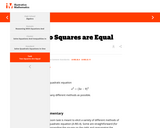
This classroom task is meant to elicit a variety of different methods of solving a quadratic equation.

Practice proving geometric theorems and solve problems.
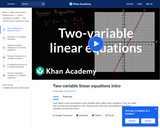
This video introduces two variable linear equations.
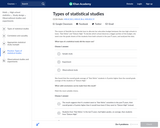
In this Khan Academy activity, students will determine what type of statistical study should be performed given a scenario and determine what result should be drawn after the results.
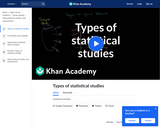
This video helps with identifying statistical studies and determining if the study is appropriate to answer its intended question.
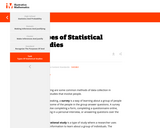
The purpose of this task is to provide students with experience distinguishing between the various types of statistical studies and to understand the purpose of random selection in surveys and observational studies vs. random assignment to treatments in experiments.

In this video, students learn how to use the unit circle to define sine, cosine, and tangent for all real numbers.